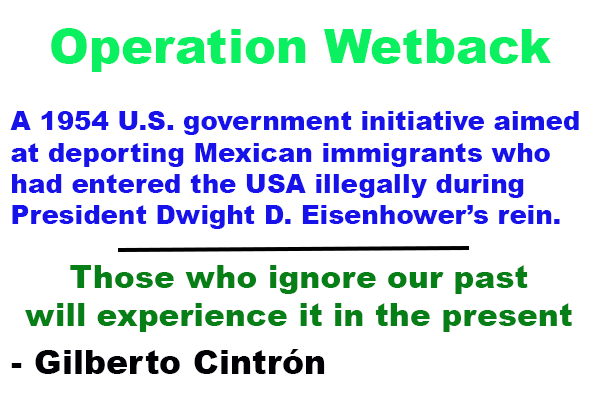 The race was intense and heated during the last few months of campaigning for the US presidency in 2024. Trump and his minions were spewing venomous and hatred-filled words, in essence exposing where they are and what they stand for. Donald Trump was boldly telling what he was going to do if re-elected. I heard a young Latino on TV say that we old people need to stop living in the past. George Santayana, a Spanish-American philosopher, essayist, poet, and novelist, in his famous work “The Life of Reason: The Phases of Human Progress”, published in 1905, said, “Those who cannot remember the past are condemned to repeat it.”
The race was intense and heated during the last few months of campaigning for the US presidency in 2024. Trump and his minions were spewing venomous and hatred-filled words, in essence exposing where they are and what they stand for. Donald Trump was boldly telling what he was going to do if re-elected. I heard a young Latino on TV say that we old people need to stop living in the past. George Santayana, a Spanish-American philosopher, essayist, poet, and novelist, in his famous work “The Life of Reason: The Phases of Human Progress”, published in 1905, said, “Those who cannot remember the past are condemned to repeat it.”
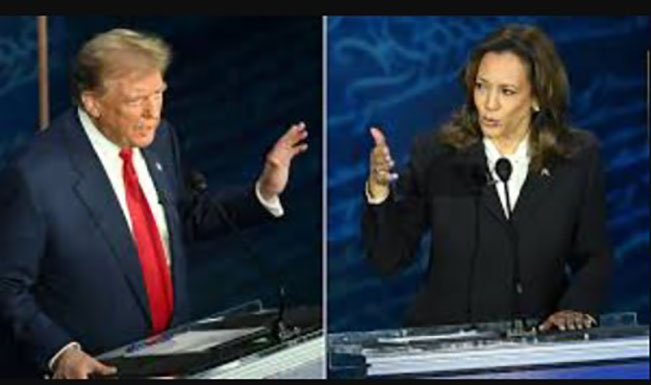
What a time in American History we are living in.
I am a 70-year-old man, born, raised, and still living in New York City. I lived through Watergate, Iran-Contra, and many other political controversies. Being on earth for seven decades, one is fortunate to have lived through many things, and can bear witness to that quote. Imagine a young toddler sticking his or her hand in the fire and not learning anything from it. It is safe to assume that the child would repeat that mistake again. Thankfully, many of us can remember the past and are not condemned to relive it. However, as a society, we often do not apply this same logic, forget and relive our past mistakes.
While many people praise Ronald Reagan as a great orator, others remember his position on the disease that eventually came to be known as AIDS. Millions died before HIV finally came under control, through no efforts of Ronald Reagan. Oh, and the Iran-Contra scandal also occurred during Reagan’s presidency. For those that do not know what that was about, it involved the secret sale of weapons to Iran in exchange for the release of American hostages held by Iranian allies, with funds from those sales then illegally diverted to the Contras, anti-Sandinista rebels in Nicaragua. The funds came from the sale of Cocaine to American citizens, and the US government allegedly imported the cocaine.
Today, as I live and breathe, we have another President, one that millions of people love and despise. Such is the life of a national politician. Donald J. Trump, the 47th U.S. President, with his hatred for immigrants (except for his wives, two of whom are immigrants, Ivana Trump (First Wife)
Born: Ivana Zelnícková in Czechoslovakia (now the Czech Republic), and Melania Trump (Third Wife)
Born: Melania Knauss in Slovenia, which was then part of Yugoslavia. Both Ivana Trump and Melania Trump gained U.S. citizenship through the process of naturalization by marriage.
Trump’s first presidency gave permission to the White Supremicist to come out of hiding. During his first term, racial hate crimes once again soared in this country. It was because of Trump’s stance on crime and his support of White Police and their views on race that the Black Lives Matter movement was born.
But I write these things simply to set up where I want to go with this article, because today I read that there is a proposal for a reality TV show titled The American, in which immigrants would compete for U.S. citizenship, and this proposal has garnered significant attention.
Check this out :
Kristi Noem Wants Migrants to Compete for Citizenship on TV
DHS ‘vetting’ potential reality TV show where migrants compete for US citizenship
DHS says it’s in beginning stages of ‘vetting process’ for immigrant reality TV show
Trump officials reportedly consider TV gameshow with US citizenship as prize
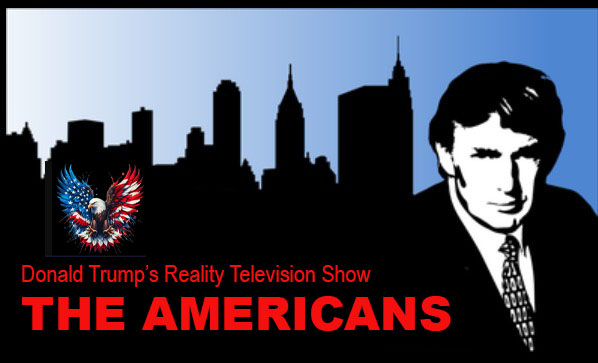
It was pitched by Rob Worsoff, the Canadian-born producer best known for his TV show Duck Dynasty. The concept involves 12 immigrant contestants engaging in challenges across the U.S., such as gold mining in California and assembling a Model T in Detroit, with the winner receiving expedited citizenship. I can not help but see the racist undertones of this proposal. I’ve also read that the Department of Homeland Security (DHS) is currently reviewing this proposal, which is in the early stages of the vetting process. While some DHS officials have clarified that Secretary Kristi Noem has not been briefed on the pitch and is not involved in its consideration, the fact that it is being considered at all is a horrific notion. Turning a very serious process, such as immigration, into a televised competition is exploitative and dehumanizing, especially because of the Trump administration’s aggressive immigration policies. But this type of behavior should not surprise us, after all, this is the United States of America, where money and power usually equal racism for the purpose of making more money. Let’s take a look at America during the Jim Crow era.
Side Note:
The Jim Crow era generally refers to the period in U.S. history when racial segregation was legally enforced, and African Americans were systematically discriminated against, especially in the southern states. And while the specific dates can vary, the Jim Crow era is typically associated with the following periods in American history:
1. Post-Reconstruction (1877) to the 1950s
Start of the Era: The end of Reconstruction in 1877 is often marked as the beginning of the Jim Crow era. After the Civil War and the Reconstruction period (1865-1877), Southern states enacted laws that restricted the rights of African Americans and legally enforced racial segregation.
Key Event: The Compromise of 1877, which ended Reconstruction and resulted in the withdrawal of federal troops from the South, allowed Southern states to reassert white control and establish discriminatory laws.
2. Early 20th Century (1900s-1930s)
During this time, Jim Crow laws were fully entrenched, particularly in the Southern states, where segregation was widespread in public schools, public facilities, and transportation.
Key Events:
The rise of Plessy v. Ferguson (1896), which upheld separate but equal facilities, solidified the legal basis for segregation.
Widespread disenfranchisement of Black voters through literacy tests, poll taxes, and other voter suppression tactics.
Continued racial violence, including lynchings, terrorized African American communities.
3. Mid-20th Century (1940s-1950s)
The mid-20th century is often seen as the height of the Jim Crow era, with racial segregation and discrimination continuing unabated, even as social and political movements began to challenge them.
Key Events:
The 1954 Brown v. Board of Education decision, which declared that segregation in public schools was unconstitutional, marked the beginning of the legal end of Jim Crow segregation.
The rise of the Civil Rights Movement in the 1950s and 1960s, led by figures like Martin Luther King Jr., Rosa Parks, and others, brought national attention to the injustices of the Jim Crow system.
4. End of the Jim Crow Era (1960s)
The Jim Crow era officially ended with the passage of landmark civil rights legislation.
Key Events:
The Civil Rights Act of 1964 prohibited discrimination based on race, color, religion, sex, or national origin, effectively ending segregation in public places.
The Voting Rights Act of 1965: This act outlawed discriminatory voting practices, such as literacy tests, that had disenfranchised African American voters.
Summary Timeline:
1877 (End of Reconstruction) to 1950s: The Jim Crow era is fully in effect, with racial segregation institutionalized and legal.
1960s: The Civil Rights Movement and federal legislation (Civil Rights Act, Voting Rights Act) mark the end of the Jim Crow system, though the legacy of racial inequality persists.
The Jim Crow era spanned several decades and left a long-lasting impact on American society, influencing policies, culture, and racial dynamics well into the late 20th century.
During the Jim Crow era (late 19th century to the mid-20th century), there were no events or shows exactly like the reality TV competition I’ve mentioned, but there were various forms of exploitation and dehumanization of African Americans, immigrants, and other marginalized groups. While TV wasn’t yet a medium in the Jim Crow era, there were events that exploited certain racial and ethnic groups for entertainment, often reinforcing harmful stereotypes. A few examples:
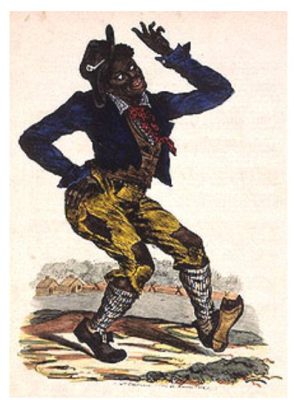
1. Minstrel Shows
Description: These were popular forms of entertainment in the 19th and early 20th centuries, where white actors performed in blackface, perpetuating racist stereotypes about African Americans. The shows often featured derogatory depictions of black people and played into the segregationist and racist ideologies of the time.
Connection to Exploitation: These shows reflected the dehumanizing attitudes toward Black people and were considered a form of public entertainment that exploited their image for the amusement of white audiences.
2. The Human Zoo Exhibitions
Description: During the early 20th century, particularly in the early 1900s, African people, including some from the Philippines and Africa, were put on display in human zoos at fairs, carnivals, and exhibitions across America and Europe. These exhibitions featured people who were often part of marginalized communities and displayed as exotic or primitive beings for public entertainment.
Connection to Exploitation: These exhibits were similar in that they turned real people into spectacles for entertainment, exploiting them in a manner similar to how some reality shows commodify marginalized groups for profit or spectacle.
 3. Race Riots and Public Spectacles
3. Race Riots and Public Spectacles
Description: During the Jim Crow era, public lynchings and racial violence were often turned into public spectacles, with large crowds gathering to watch these horrific acts of brutality. While not a competition, these events were a tragic form of exploitation and dehumanization of African Americans.
Connection to Exploitation: The public nature of lynchings and the subsequent crowd participation reflected the deeply ingrained racist attitudes that permeated society during this time.
4. Beauty Contests for Black Women
Description: In some cases, Black women were paraded in front of white audiences as part of beauty contests designed to highlight their physical traits, often in a degrading and exploitative manner. These contests focused on exoticizing and objectifying Black women rather than recognizing their worth as individuals.
Connection to Exploitation: These events commodified Black women in ways that played into the racial ideologies of the time.
5. Immigration and Assimilation Contests
Description: Though not exactly a competition, the U.S. government during the Jim Crow era did enforce policies that treated immigrant populations as inferior and sought to force them into conformity to American ideals, sometimes through demeaning and discriminatory tests or challenges. However, these were more about legal and social pressures than public entertainment.
Connection to Exploitation: Immigrants, particularly those from Southern and Eastern Europe or Asia, faced intense pressure to prove their worthiness to be American, often with limited or no acknowledgment of their backgrounds or cultures.
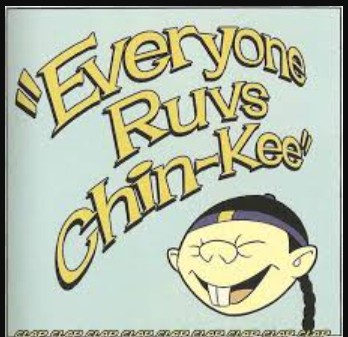
Maybe there weren’t televised competitions during the Jim Crow era, but similar types of exploitation were common in media and public events, reinforcing racial hierarchies and showcasing marginalized and immigrant people for the entertainment of those in power. These historical practices and mindsets have lasting effects on how marginalized communities are treated and represented today.